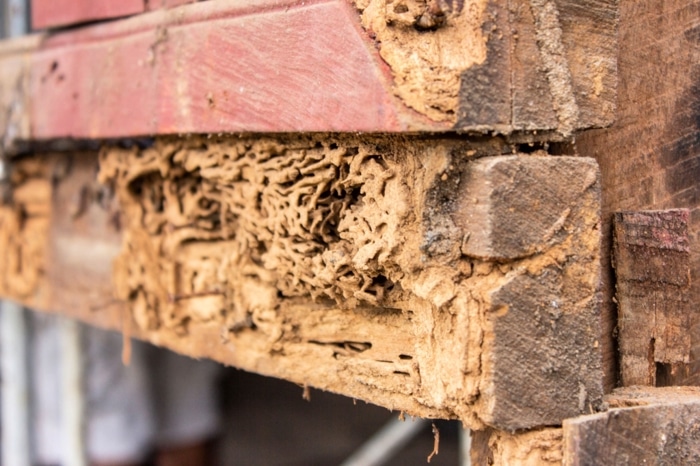Spring is officially here, and for property managers, that means it’s time to take pest prevention seriously. Warmer weather brings activity and opportunities for bugs and rodents to move in. This guide gives you a real-world approach—no fluff, no guesswork—so you can be the expert and keep your properties pest-free.
Know What’s Active This Season
In spring, pests that spent winter hiding start looking for food, water, and shelter. That includes ants, rodents, spiders, cockroaches, millipedes, and occasional stinging insects like wasps. You’ve seen it before—ants marching across patios, a mouse darting in a corner, or a spider web draped between outdoor plants. Understanding this behavior helps you stop problems before they gain a foothold.
Your goal this time of year is to catch things early—before there are dozens of ants in the kitchen or a rat colony under a deck. Once they’re established, every maintenance crew in the world will struggle to control them. Early action saves time, money, and headache.
Walk the Perimeter Thoroughly
Every spring, get outside and do a perimeter walk. Look for cracks, gaps, torn screens, poorly sealed doors, and even landscaping choices that create pest-friendly conditions. For example, mulch that’s piled up against a home’s foundation attracts ants and termites. A trimmed bush right next to siding can give rats a highway into wall voids.
During these walks, pull weeds, clean out gutters, and trim back tree branches. Don’t just glance—get close, kneel, use a flashlight. Document each issue you see, then schedule repairs with your maintenance team. Do not underestimate the impact of small entry points. Those tiny cracks in window frames or fascia can be wormholes for pests.
Check Doors, Windows, Vents, and Screens
Interior air leaks are often the culprit behind unexpected bug sightings. That’s why during spring walkthroughs you should test every door sweep, window seal, and ventilation cover. Screens should be snug with no holes. Door sweeps should touch the ground. If they don’t, pests will slip right in. And if the HVAC vents have no covers, dust and debris build up—and so can spiders.
Every broken or missing sweep or screen may seem small, but collectively they’re what lets pests in day after day. Even one corner left open is enough for ants or roaches to discover an apartment and start nesting. Treat these repairs like topping up the oil on a car: regular, small tasks that pay off big.
Inspect Common Problem Areas Inside Units
Inside units, pests typically show up in kitchens, bathrooms, and storage areas first—anywhere with food, moisture, or clutter. In spring, water heaters and sump pumps may leak or create humidity, which attracts many insects.
Make it part of your regular unit inspections to check behind toilets, beneath sinks, around baseboards, and under appliances. Look for furniture or cardboard piled against walls—these are bug corridors. Use sticky traps in hidden spots to monitor early signs of mice or cockroaches. If you spot droppings, egg casings, shed skins, or live pests, it’s time to act fast.
Even small signs—like a lone cockroach or a few ant trails—can lead to bigger infestations if you wait.
Treat or Refer Early Drops Signs
The moment you detect pest activity, treat it. For property managers, that means either applying a pest-control product yourself (if licensed) or bringing in professionals immediately.
Letting issues linger even a week can turn a manageable cleanup into a multi-unit infestation. Take ant trails, for example: Initially they’re limited to one or two units, but within days they can cross hallways, fences, and landscaping.
Proactive treatment stops infestations in their tracks, reduces resident complaints, and keeps your reputation solid. Don’t wait until pests spread—move earlier than you think is necessary.
Prioritize Roof, Gutter, and Attic Checks
It may not be something you inspect every month, but spring is a critical time to walk rooftops, check attics, and clean out gutters. Clogged gutters can overflow, causing water to drip down siding and collect in window wells—attractive moist zones for bugs.
Open up attic hatch doors and check for holes or wood damage. Rodents and birds can nest up there if the screening is damaged. If you see droppings, shredded insulation, or critter noises, act immediately.
During these checks, also ensure that vents (like roof and soffit vents) have proper screens and aren’t blocked by nests. Attics and roofs are often overlooked until it’s too late.
Maintain Landscaping with Pest Prevention in Mind
Landscaping plays a big role in whether pests choose your property. As spring progresses, inspect mulch beds, plant bases, and tree canopies. Keep mulch one to two inches away from foundation walls. Open spaces under decks and sheds can hide rodent runways—seal those gaps.
Trim branches and vines that touch structures—rats and squirrels can bridge them onto roofs or attics. Remove leaf litter and yard waste regularly, especially during spring clean-up. It doesn’t need to sparkle, but it does need to be free of things pests like: moisture, shade, and hiding places.
Refresh Landscaping and Exterior Treatment Zones
If your last season’s perimeter pest treatment has worn off, spring is the time to refresh it. Exterior sprays or granular products around foundations, garage door frames, and outdoor patio posts create a barrier to crawling insects. This layer needs refreshing every few months, especially after rain or sprinkler use.
Make sure you or your pest provider are using seasonal-grade products formulated for crawling and stinging insects common in your area. A strong perimeter barrier is often your best defense against spring pests looking to move in.
Review Waste, Garbage, and Recycling Areas
Garbage zones are a magnet for pests. In spring, organic material breaks down fast, creating smells that attract flies, ants, rodents, and more. Walk through dumpster areas, collect and clean any build-up, and ensure lids close fully.
Install rodent control in large garbage bins if needed. Keep recycling areas tidy—they attract roaches too. Consider adding daily or every-other-day cleaning schedules during warm months. It’s a fight you can’t ignore.
Communicate With Residents
Property residents are your eyes and ears. In spring, send a quick “tickle alert” reminding them to report any sign of pests whatsoever. Create a simple reporting line. When residents email or call, respond immediately with encouragement to let you know—even a single ant line in the kitchen.
That early stage is your best chance to intervene promptly. Reward good reporting. Keep it friendly, and share quick tips they can follow—like wiping up spills, storing food in sealed containers, and fixing leaky faucets. Tell them: “We need to catch this before it gets bigger.”
Verify Professional Pest Services and Documentation
If you work with a licensed pest control company, make sure your spring service is booked, confirmed, and documented. Ask for service agreements and treatment reports for each building. You want to know exactly what treatments were done, what active ingredients were used, and when the next visit is scheduled.
It may feel like overhead to manage paperwork, but this documentation saves you during inspections, resident complaints, and potential liability. If any unit required emergency treatment, get a copy of that report too. Keep everything in a shared file or cloud drive so your entire maintenance team can access it.
Create a Recurring Inspection Calendar
Spring is an intense season, but pest control is year-round. Set reminders every three months to repeat inspections and treatments as needed. You don’t need a detailed checklist every time, but have a quick system: perimeter walk, unit inspection, treat ASAP if needed, follow up.
Calendars help you catch new problems early—especially between seasons when conditions shift. Regular, consistent monitoring keeps you in charge rather than reacting to emergencies later.
Why This Matters Now
Taking action in spring prevents bigger issues in summer or fall. Pests breed fast, and waiting for more visible signs means you’re dealing with colonies and nests. At that point, your monthly pest bill triples, and residents get irritated.
By following this checklist, you keep pest issues small, costs down, and your staff responsive. Plus, your properties stay comfortable and smell-free—an immediate benefit residents will notice. When you handle pest issues early, efficiently, and transparently, you reinforce the message: you’re taking care of their home.
Spring pest control isn’t mysterious—it’s about being proactive, observant, and consistent. Know what to look for, seal openings, manage moisture and clutter, inspect critical zones, and act fast at the first sign of trouble. Then loop in your residents and professionals to create a full defense layer.
Stick with this framework every year, and you’ll handle spring the way property managers should: smart, confident, and ahead of the curve. your properties stay pest-free, your residents stay happy, and you avoid the scramble that comes with out-of-control infestations later in the season.






